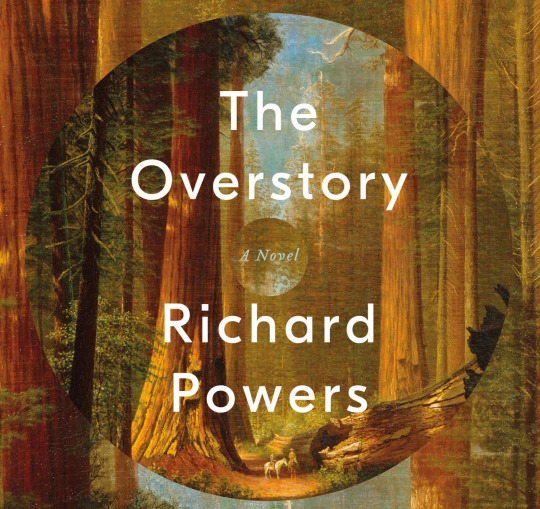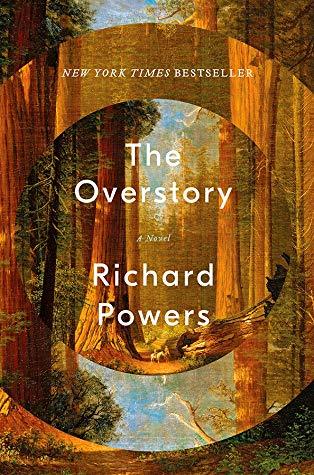#Douglas Pavlicek
Text
Book Review: The Overstory A Novel by Richard Powers

“This is how it must go. There will be catastrophes. Disastrous setbacks and slaughters. But life is going someplace. It wants to know itself; it wants the power of choice. It wants solutions to problems that nothing alive yet knows how to solve, and it’s willing to use even death to find them.” (496).
The Overstory is an amazing fictional novel by Richard Powers that shows the connection of trees as a symbol for life. Throughout the book, we are introduced to separate characters throughout time, at different points in their life and with different life stories but are all connected through trees. Powers uses influences of real life stories such as Suzanne Simard’s talking trees or Douglas Pavlicek’s participation in the Stanford Prison Experiment.
My favorite story that Powers had explained was one that was quite sad. As the very first story, he goes on about a family’s roots being moved from New York to Iowa, and the planting of a tree at that. Out of six trees, one remains alive enough for generations upon generations to photograph to the point where one descendant decides to call it a curse. When his son gets infatuated with the photographs that his ancestors had taken, he begins the tradition once more of documenting the chestnut tree. The interesting take on this chapter, though is that the descendant, Nick Hoel, gets stuck in a snowstorm while visiting a Museum one Christmas and comes back to find his entire family dead.
My other favorite chapter from this book is around Chapter 8, which connects to Chapter 1 about the Hoel farm and their chestnut tree. The character, Olivia, meets Nick Hoel on the farm after going through a life-changing event. She gets struck by an electrical socket as her heart stops beating. When in this state, she speaks to other worldly beings that tell her to save the Redwoods in California. after several minutes, her heart starts again. On her way there, she meets Nick Hoel on the farm and convinces him to go with her. I loved the cross referencing between stories and how theirs happened to merge. Their story is shown throughout multiple chapters across the book.
This book changes this idea of “celebrityhood” and iconicism of people. When reading the book, it felt like I had an inside scoop on the lives that the book’s chapters were influenced by. It put into perspective that celebrityhood is merely subjective. Celebrities, as us, also have story and a life with hardships and meanings. They don’t just wake up, get glammed up, and go about their day on social media.
This book made me feel as though I was a third party, experiencing lives in third-person. It has the reader going through the achievements and obstacles in everyday events which really put it into perspective, especially with more well-known people. With Simard’s-influenced chapter, I was able to understand what Patricia, Simard’s character, had gone through. What struck me as interesting was one of Simard’s talks, she discussed mother trees talking to their spawn and relaying knowledge at death. Similarly, Patricia’s dad had done the same to her with agroforestry and ecology.
This book is the epitome of a portrayal of activism. One of the main themes of this book is about the relationship between the human and the tree. The tree remains the same while humans continually change, die, and eventfully harm themselves and other trees. It opened my eyes to human nature, being the everyday flashy and fast lifestyle. One of the more interesting themes present is that of destruction. With extreme tragedies, human nature will be the destruction of ourselves. Something that we often hear in everyday about climate change is that nature will eventually reverse the effects, but that day will come once humans are extinct.
The rebirthing of nature is a common notion that Powers highlights throughout the book. In a chapter about a Mulberry tree being planted when the character, Ma Si Hsiun immigrated to America to escape communism, he plants his roots and starts his family. In this chapter, his three daughters never truly understood the man or where he came from despite being his father. As the chapter progresses and his daughters get older, Ma Si eventually kills himself under the same Mulberry tree he had planted. This symbolism describes the roots he set forth being his demise and reasoning of loneliness.
New concepts that this book introduced to the world is the nexus of interdependence amongst all living things. The tree needs to be planted, just as the human needs the tree to survive or to not survive. By looking into the lives of the characters and following them each throughout their lives, we connect that people who have lived different lives with different memories and different hardships, are all interconnected through nature and through the tree despite also having different species. I picture it as life through the seasons, the leaves of a tree die and rebirth come every Spring just as the people and moments throughout the book do.
1 note
·
View note
Text
And yet it was all still a single fig. One banyan.
Miles below and three centuries earlier, a pollen-coated wasp crawled down the hole at the tip of a certain green fig and laid eggs all over the involute garden of flowers hidden inside. Each of the world’s seven hundred and fifty species of Ficus has its own unique wasp tailored to fertilize it. And this one wasp somehow found the precise fig species of her destiny. The foundress laid her eggs and died. The fruit that she fertilized became her tomb. Hatched, the parasite larvae fed on the insides of this inflorescence. But they stopped short of laying waste to the thing that fed them. The males mated with their sisters, then died inside their plush fruit prison. The females emerged from the fig and flew off, coated in pollen, to take the endless game elsewhere. The fig they left behind produced a red bean smaller than the freckle on the tip of Douglas Pavlicek’s nose. That fig was eaten by a bulbul. The bean passed through the bird’s gut and dropped from the sky in a dollop of rich shit that landed in the crook of another tree, where sun and rain nursed the resulting seedling past the million ways of death. It grew; its roots slipped down and encased its host. Decades passed. Centuries. War on the backs of elephants gave way to televised moon landings and hydrogen bombs. The bole of the fig put forth branches, and branches built their drip-tipped leaves. Elbows bent from the larger limbs, which lowered themselves to earth and thickened into new trunks. In time, the single central stem became a stand. The fig spread outward into an oval grove of three hundred main trunks and two thousand minor ones. And yet it was all still a single fig. One banyan.
~ Richard Powers, The Overstory: A Novel (W. W. Norton & Company, April 3, 2018)
6 notes
·
View notes
Photo

The Overstory by Richard Powers
One of the few surviving Chestnut trees is the center of a 125 year tale of multigenerational farmers, dwindling down to just a homestead, and this tree that anchors them since its planting. Immortalized in monthly photos, tasked from each father to son, it stands testament to survival, documented in its regal simplicity. Stoic when all else fade to memories.
The following tale is of a Chinese student of engineering who comes to America as his father’s last hope, as Mao takes their livelihood (and lives) away. He settles, schools, marries, and begets 3 daughters. He refuses his native tongue (yet for all his years in America, still talks like a newly embarked?) ... primarily set around a mulberry tree, of deep family lore, it is also where it ends.
Adam Appich is a gifted child in a family of mostly irrelevance. His story is sad, for the blindness and disdain. One of 5, he creates his own solitude in nature, observing. Each child had a tree planted for their birth, pertinently assumedly. Was not quite sure if the ending was intended to be humorous or not, but I chose to take it that way.
Douglas Pavlicek proves himself in the service, fighting in Vietnam and gets shot down after the war ends, still attaining a Purple Heart and an Air Force Cross for his injuries. No longer usable, he afters at a horse ranch where he reads Nietzsche to the steeds and tries to talk up the lonely street traffic via purposeful pot holes at the property end.
Quitting that job, he drives westward, happening upon a hidden clearcut while relieving himself roadside. The vastness angers, saddens and awakens him. National forests. Gone. He wants to take action. He hires on to replant designated areas, knowing it’s but a temporary fix, but a fix just the same.
I think that, so far, was the saddest chapter for me.
In Neelay Mehta, it dawns on me the centered eclecticism of this book. To write one story is good, admirable. To write 12 different stories in one book is, well, amazing. They need not all the pages each, as the story told us enough. I am in awe of the diversity, yet connection via a trees insertion. One or a forest, starring or backstage. Just as we all have that rooted factor in our own life - a tree, somewhere, sometime, mattered. Bravo, Powers, bravo.
Patricia Westerford !!!!
As brilliant as brilliant can be. I am in total, blissful awe. I don’t want to read another word, maybe ever. Just live in this story forever.
And then the stories start to connect. Branches grown inward towards the trunk of the whole. I wish I had paid more attention earlier.
I’m too connected, concerned, overpowered by the eco ramifications... it’s too real life (RL) given today’s atmosphere of disregard and gluttony. This book is breaking my heart.
I do not recommend this book for eco-empaths, but for general readership, it’s an in-depth read, fully charged and well executed. Powers delivers a diverse cast of characters that are all united in nature love. I wish I could say the same for all humanity.
0 notes